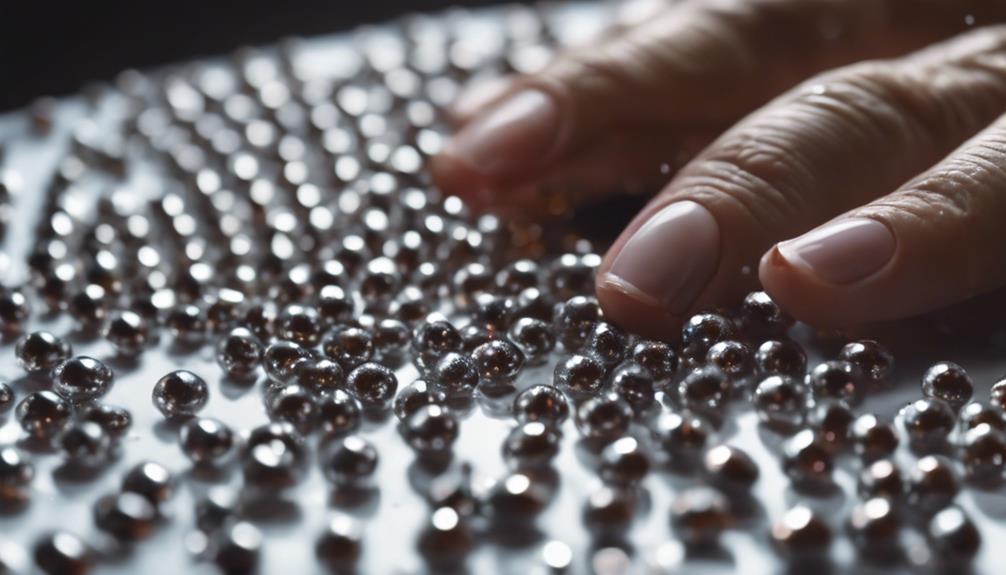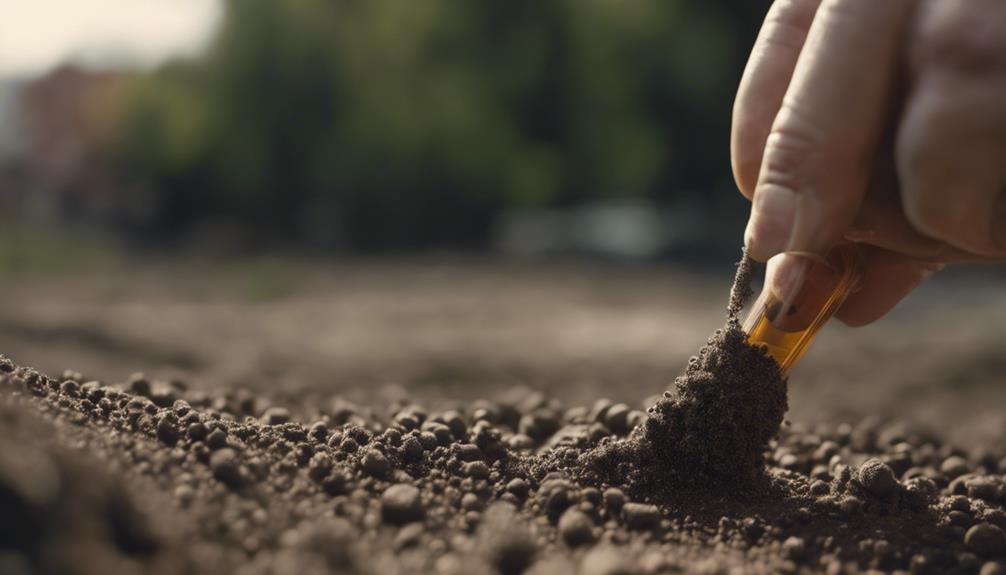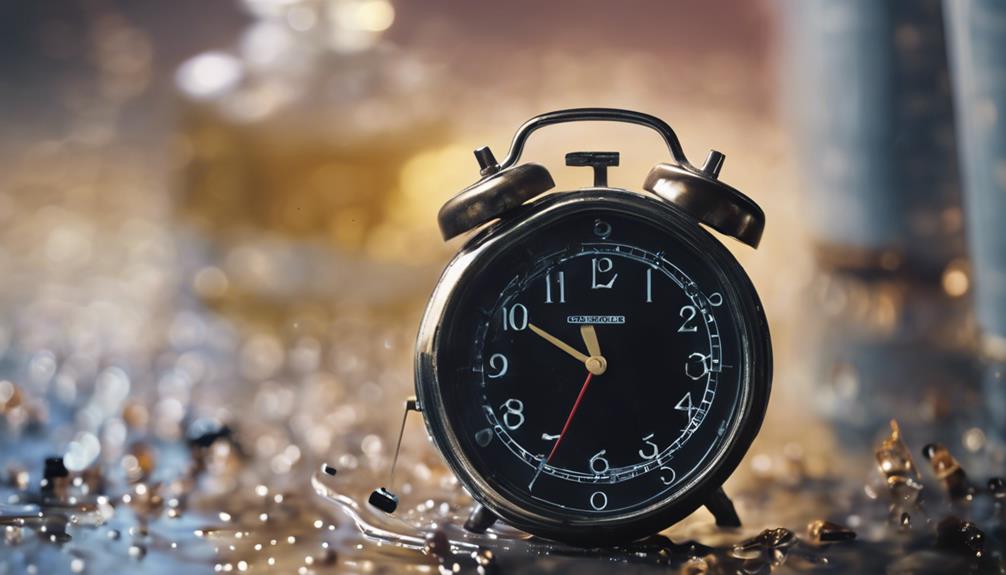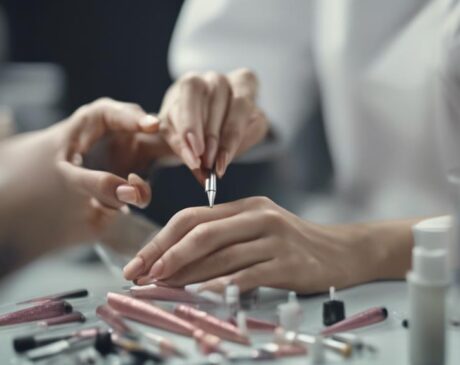Why Won T Liquid Nails Dry?

Liquid Nails may not dry due to factors like incorrect application techniques, fluctuating humidity levels, extreme temperatures, improper surface preparation, expired product usage, and insufficient curing time. Understanding these factors is key to ensuring successful drying of the adhesive.
Key Takeaways
- Thick application prolongs drying time.
- Incorrect application technique affects cure.
- High humidity can hinder drying process.
- Expired product leads to ineffective drying.
- Inadequate cure time results in incomplete drying.
Incorrect Application Technique

When applying Liquid Nails, using the correct technique is crucial for ensuring proper drying and adhesion. One common mistake is applying too much adhesive, thinking that more is better. However, excessive adhesive can lead to prolonged drying times or even prevent the Liquid Nails from drying altogether. It is essential to apply a thin, even layer of adhesive to both surfaces that need to be bonded. This allows for better contact between the materials and promotes faster drying.
Another mistake is not allowing for enough curing time. Liquid Nails require time to set and cure properly. Rushing the process by moving or putting pressure on the bonded materials too soon can compromise the adhesive's effectiveness. Following the manufacturer's recommended curing time is vital for a strong and durable bond.
Furthermore, improper surface preparation can hinder the drying process of Liquid Nails. Surfaces should be clean, dry, and free of any dust, grease, or debris before applying the adhesive. Any contaminants on the surface can prevent the Liquid Nails from adhering correctly and drying as intended.
Humidity Levels
Humidity levels play a crucial role in the drying process of Liquid Nails. High humidity can prolong the drying time significantly, while low humidity may cause the adhesive to dry too quickly, affecting its bonding strength. Understanding the ideal moisture conditions for using Liquid Nails is essential to ensure proper adhesion and optimal results.
Impact of Humidity
Under varying levels of humidity, the drying process of Liquid Nails can be significantly affected. High humidity levels can prolong the drying time of Liquid Nails, leading to potential issues with the adhesion and overall effectiveness of the product. On the other hand, low humidity levels can expedite the drying process but may also impact the strength and durability of the bond created. It is essential to consider the following when working with Liquid Nails in different humidity conditions:
- High humidity can extend drying time.
- Low humidity can accelerate drying but may affect bond strength.
- Ideal humidity levels ensure optimal performance and bond quality.
Drying Time Variation
Amid fluctuating humidity levels, the drying time of Liquid Nails exhibits notable variations that can impact the overall performance and durability of the adhesive bond. High humidity levels tend to slow down the drying process of Liquid Nails, leading to extended curing times. Conversely, in low-humidity environments, the adhesive may dry too quickly, potentially compromising the strength of the bond. These variations underscore the critical importance of considering ambient humidity levels when working with Liquid Nails to ensure optimal adhesive performance. Monitoring and adjusting the application conditions, such as using dehumidifiers or humidifiers as needed, can help mitigate the effects of humidity on drying times and enhance the overall efficacy of Liquid Nails in various settings.
Ideal Moisture Conditions
Given the significant impact of ambient moisture levels on the drying time and performance of Liquid Nails, understanding the ideal moisture conditions, particularly in relation to humidity levels, is imperative for achieving optimal adhesive results.
- Ideal Humidity Levels for Liquid Nails:
- Keep humidity levels between 40%-60% for best results.
- Avoid excessively dry conditions below 40% humidity.
- High humidity above 60% may lead to extended drying times.
Maintaining the ideal moisture conditions ensures the proper curing and bonding of Liquid Nails. By controlling the humidity levels within the recommended range, users can enhance the overall effectiveness and efficiency of the adhesive, resulting in reliable and durable bonds for various applications.
Temperature Extremes
When exposed to temperature extremes, the drying process of Liquid Nails may be significantly affected, leading to potential issues with its drying time and effectiveness. Extreme heat can cause Liquid Nails to cure too quickly, preventing it from bonding properly. Conversely, extreme cold can slow down the curing process, prolonging the drying time and leaving the adhesive in a semi-liquid state for an extended period. These temperature fluctuations can compromise the overall strength and durability of the bond created by Liquid Nails.
To address this challenge, it is crucial to store Liquid Nails in a controlled environment that maintains a moderate temperature range. Additionally, before application, ensure that both the adhesive and the surfaces being bonded are within the recommended temperature range specified by the manufacturer. By taking these precautions, you can optimize the drying process of Liquid Nails and enhance its bonding performance, even when faced with temperature extremes.
Improper Surface Preparation

Experiencing issues with Liquid Nails drying properly can also be attributed to inadequate surface preparation. Proper surface preparation is crucial for the adhesive to bond effectively and ensure a strong hold. Here are some common factors related to improper surface preparation that can hinder the drying process of Liquid Nails:
- Contaminants: Residues such as dust, oil, grease, or paint on the surface can create a barrier that prevents the adhesive from adhering properly.
- Moisture: High levels of moisture on the surface can interfere with the curing process of Liquid Nails, leading to extended drying times or incomplete drying.
- Uneven Surfaces: Rough or uneven surfaces may not allow for sufficient contact between the adhesive and the materials being bonded, affecting the drying and bonding capabilities of Liquid Nails.
Old or Expired Product
The effectiveness of Liquid Nails may be compromised if the product used is aged or expired. Like many adhesive products, Liquid Nails has a shelf life, beyond which its chemical composition may start to deteriorate, leading to issues such as prolonged drying times or failure to dry completely. When using an old or expired product, the adhesive properties may weaken, resulting in a subpar bond between surfaces. This can be particularly problematic in construction or DIY projects where a strong and reliable bond is crucial.
To ensure optimal performance, it is essential to check the expiration date on the Liquid Nails product before use. Using expired adhesive not only risks a poor outcome but also potentially compromises the structural integrity of the project. Investing in fresh, high-quality adhesive is a fundamental step towards achieving successful results in any bonding application. By staying vigilant and proactive in monitoring product expiration dates, users can uphold the standard of excellence expected in modern construction practices.
Insufficient Cure Time

Insufficient cure time can often result from applying too thin of a layer of Liquid Nails or not allowing the adhesive enough time to fully dry. Inadequate cure time may also occur if the product is exposed to excessive moisture before it has had a chance to set properly. It is crucial to follow the manufacturer's recommended application guidelines and allow sufficient time for the Liquid Nails to cure completely for optimal bonding strength.
Cure Time Too Short
Due to an inadequate cure time, Liquid Nails may fail to dry completely. This issue can arise for several reasons, including:
- Improper Temperature: Insufficient cure time may occur when Liquid Nails is applied in environments with temperatures outside the recommended range.
- Excessive Humidity: High levels of humidity can prolong the curing process, leading to a tacky or wet adhesive surface.
- Thick Application: Applying Liquid Nails too thickly can extend the cure time, as the adhesive needs more time to set and dry properly.
To ensure optimal drying results, it is crucial to follow the manufacturer's instructions regarding application conditions and thickness, allowing for a strong and reliable bond.
Incorrect Application Technique
When facing issues with Liquid Nails drying properly, one common factor contributing to this problem is the use of an incorrect application technique, specifically resulting in insufficient cure time. Proper application of Liquid Nails involves applying a sufficient amount of adhesive to ensure a strong bond. If the adhesive is spread too thin or unevenly, it can lead to prolonged drying times or incomplete curing. Additionally, failure to follow recommended curing conditions, such as temperature and humidity levels, can further hinder the drying process. To address this issue, users should carefully read and follow the manufacturer's instructions for application, ensuring an even spread of adhesive and providing adequate time for proper curing to achieve optimal results.
Frequently Asked Questions
Can Using a Hairdryer or Heat Gun Speed up the Drying Process of Liquid Nails?
Harness the power of heat to expedite Liquid Nails' drying. Applying gentle warmth from a hairdryer or heat gun can potentially accelerate the process, quickening your project's completion. However, exercise caution to avoid adverse effects.
Are There Any Special Additives That Can Be Mixed With Liquid Nails to Help It Dry Faster?
There are special additives available that can be mixed with Liquid Nails to expedite the drying process. These additives are designed to enhance drying time without compromising the adhesive properties of Liquid Nails.
Will Using a Primer on the Surface Before Applying Liquid Nails Help With the Drying Process?
Using a primer before applying Liquid Nails can enhance adhesion and improve drying time. Primers create a suitable surface for adhesion, allowing the adhesive to bond more effectively and accelerate the curing process.
Is It Possible to Over-Apply Liquid Nails, Causing It to Take Longer to Dry?
Over-applying Liquid Nails can indeed prolong drying time. Excessive application hinders proper air exposure, impacting the adhesive's curing process. Adhering to recommended usage amounts ensures optimal drying conditions, promoting efficient bonding and reducing the risk of extended drying periods.
Are There Any Specific Environmental Factors, Such as High Altitude or Pollution, That Can Affect the Drying Time of Liquid Nails?
Various environmental factors, like high altitude or pollution, can indeed impact the drying time of Liquid Nails. These conditions may affect the adhesive's ability to cure properly, leading to extended drying times. It's crucial to consider these factors for optimal results.




